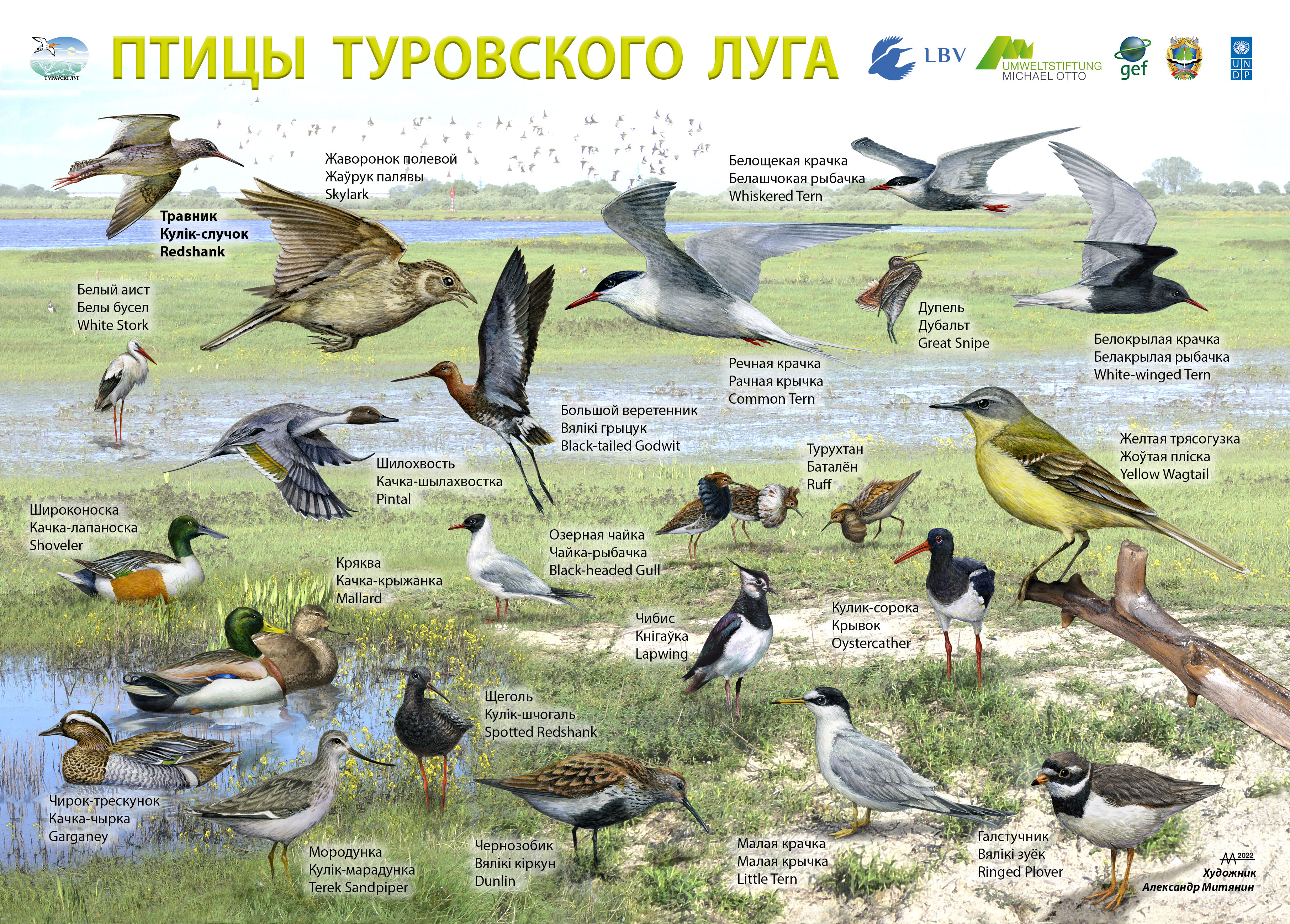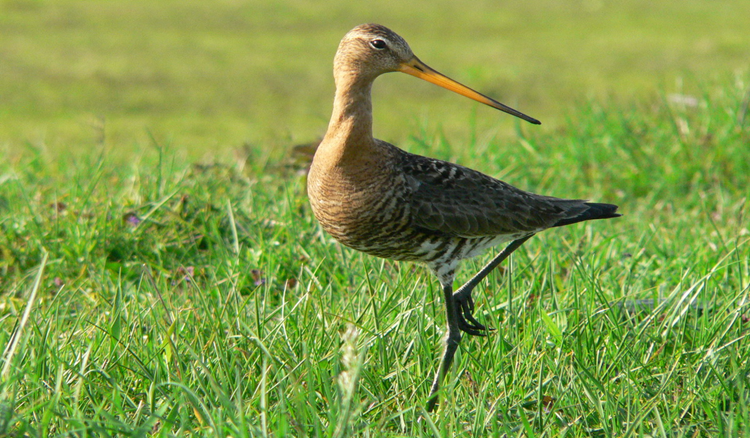UNDP and partners develop systemic nature-based solutions for the conservation and sustainable management of floodplain meadows in Belarus.
Healthy floodplain meadows urge to help bird populations thrive
March 6, 2023
A bird's-eye view of the spring floodplain meadow Turovsky in the Pripyat River valley in Southern Belarus.
Alongside peat mires, floodplain or flood meadows are on the top of Belarus’ list of nature treasures. According to the data of the State Property Committee, the total area of flood meadows in Belarus is almost 200,000 ha. These ecosystems can be found predominantly in the southern part of the country. There they form in the valleys of the major rivers such as Dnieper, Pripyat, Nieman, as well as their tributaries. In spring floodplain meadows are flooded with river water and recover early summer when they are awash with wildflowers and grasses. The meadows are home and a breeding site for many rare and endangered animal and plant species, many of which, such as terek sandpiper (Xenus cinereus), black-tailed godwit (Limosa limosa), great snipe (Gallinago media), little tern (Sternula albifrons), are included into the Red Book of Belarus.

The birds build their nests on the ground and prefer open spaces to see forthcoming nest predation risks.
The Turov meadow in Zhitkovičky district of Homiel region is, probably, Bealrus’ the most famous floodplain meadow. More than 50 bird species nest and stop there during their migration. Since 2008, the meadow is a protected nature area with the status of a biological reserve of local importance and an Important Birds Area (IBA).

The Red Book species of the black-tailed godwit (lat. Limosa limosa).
Despite their critical importance for preserving biodiversity, floodplain meadows are very vulnerable and fragile ecosystems. Overgrowing with shrubs and willow trees deprives meadows of an important environmental function as a nesting place for birds to nest. Abundant vegetation disturbs the ecological balance and leads to degradation of an entire ecosystem. Shrubs, long grass, and small trees change the landscape drastically. They reduce visibility, making meadows unacceptable for birds that build their nests on the ground. In addition, the vegetation impacts water quality, which also contributes to biodiversity loss.
Scientists consider the main causes of overgrowth to be the cessation of grazing on open floodplain meadows and wetland lowlands and the lack of haying there. Over the past decades, over 500,000 ha. of natural wetlands and lowland floodplain meadows have been affected by overgrowth.
The United Nations Development Programme (UNDP) in Belarus and the Ministry of Natural Resources and Environmental Protection together with the Global Environment Facility (the GEF), have been working since 2017 on development of systemic nature-based solutions for the conservation and sustainable management of floodplain meadows in Belarus. The partnership contributes to implementation of the activities of the National Action Plan for the Conservation and Sustainable Use of Biodiversity for 2021-2025.
To keep floodplain meadows from overgrowth, ecologically cost-effective management solutions are being applied.
A tractor with a special mower helps to cut shrubs.
Mechanized mowing of shrubs and small trees is used as an emergency measure. In the long term, it is important that the mowed area does not become overgrown again. For this purpose, summer and winter grazing of large herbivores species, including traditional cattle grazing, is essential in areas important for the conservation of rare species.
In 2019, UNDP supported an experiment where, 15 bulls and cows of the Heke cattle breed were brought from Latvia to the territory of Zhitkovičky District, Pogost flood meadow near the town of Turov.
The descendants of the legendary aurochs work as 'living mowers': they eat shrubs and tall grass helping to keep the meadow free from excessive vegetation.
The animals, whose herd increased up to 25 heads in 2022, are free-range on an area of 200 hectares. They quickly adapted to the new environment and do a good job of maintaining the meadow in a healthy state.
The UNDP partnership in Belarus to conserve floodplain meadows and preserve a unique biodiversity of these natural areas is helping to design and apply green solutions that combine traditional knowledge and nature-based innovations.

 Locations
Locations



